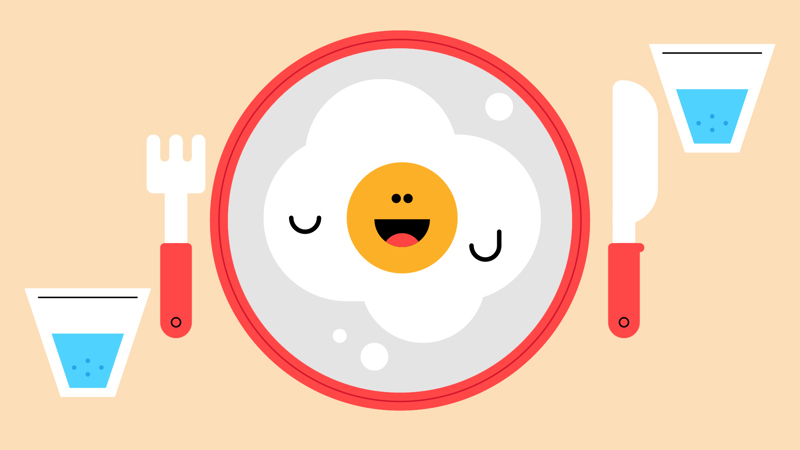
Make food matter
You’ll need
- Pens or pencils
- Ingredients and equipment (see recipe card)
Before you begin
- You’ll need to do this activity across two meetings, and people will need to track their food waste at home too. If you’ve got a little more time, try the Track your food footprint activity before getting stuck into this.
- You’ll need enough copies of the ‘Food waste diary’ for everyone to take one away with them.
Keep a food waste diary
- The person leading the activity should give everyone a ‘Food waste diary’. They should make sure everyone understands what they need to put in each of the boxes.
- Everyone should take their ‘Food waste diary’ home and put it somewhere it’s easy to see (for example, on the kitchen wall). They should complete it for a week.
- Everyone should add up the total amount of food thrown away.
Keep a food saver diary
- Everyone should share what they found out from their food diaries. Which foods were binned the most? Why?
- Everyone should share examples of how simple actions could stop food from being thrown away.
- The person leading the activity should give everyone a new ‘Food waste diary’. They should make sure everyone understands what they need to put in each of the boxes.
- Everyone should share what they’re up to with the people they live with and encourage them to try their best too.
- Everyone should complete their new food diaries. Again, they can get creative with pictures and collages.
- Once their diaries are complete, everyone should add up how much food they’ve rescued and how they saved it. They should think of a creative way to share the successes of their food waste mission with everyone else.
Make meals from leftovers
- Everyone should get into groups of between four and six people. It’s best if people with similar dietary requirements stick together – it makes it easier and reduces the risk of cross-contamination.
- Everyone should get ready to cook. They should tie their hair up, take off rings, roll up long sleeves, wash their hands, and cover cuts with a blue (or brightly coloured) plaster.
- The person leading the activity should give each group a copy of one of the recipes.
- Each group should collect the equipment and ingredients they need, weigh and measure their ingredients, and follow the recipe card.
- Once their leftover dishes are ready, everyone should clean and lay a table and serve their food.
- After they’ve enjoyed their pizzas, everyone should tidy up and clean.
- At least a third of all edible food is thrown away – that’s enough to feed two billion people. (Source: Food and Agriculture Organisation, United Nations 2011 and World Vision)
- Global food waste generates 22 million tonnes of greenhouse gases, four times more than aviation. (Source: WRI)
- Reducing the amount of food that’s thrown away saves water, energy, and other resources.
- By 2050, the world will need 69% more calories a day than it did in 2006, to feed an estimated population of 9.6 billion people. (Source: WRI)
- An average British family can save up to £840 a year if they stop throwing food away. (Source: LoveFood HateWaste)
- You can still eat some foods after their best before date, although the flavour may not be quite as good.
- Use by dates tell us when an item may not be safe to eat, so you shouldn’t eat food after this date.
- Find out if anyone has any food allergies (or any other dietary requirements), and make sure you cater for them. Depending on the individual, this may mean having an alternative, or making sure the whole meeting space is free from an allergen.
- Separate food types to avoid cross-contamination.
- Always wash your hands with soap before preparing and eating food.
Reflection
This activity was all about being a citizen and understanding responsibilities. Did people waste more or less food than they expected? In the UK, households waste six and a half million tonnes of food each year. Four and a half million of these tonnes are edible – enough to fill 38 wheelie bins or the Royal Albert Hall in London 90 times. It’s not just a problem in the UK; if global food waste were a country, it’d be third for greenhouse gas emissions (after China and the US).
People aren’t just throwing away things like eggshells or bones from meat, we’re throwing away food like bread crusts, leftover meals, or potato peelings that could be transformed into something tasty. Why is it important that people reduce food waste? It can save them money and also slow down global warming.
This activity was also about developing skills and practising in the kitchen. Had people tried pizza before? How was today’s pizza different? What sorts of skills did everyone use to make this recipe? People might think about grating and chopping, for example. What other recipes use these skills?
Safety
All activities must be safely managed. You must complete a thorough risk assessment and take appropriate steps to reduce risk. Use the safety checklist to help you plan and risk assess your activity. Always get approval for the activity, and have suitable supervision and an InTouch process.
- Food
Remember to check for allergies, eating problems, fasting or dietary requirements and adjust the recipe as needed. Make sure you’ve suitable areas for storing and preparing food and avoid cross contamination of different foods. Take a look at our guidance on food safety and hygiene.
If it’s too difficult to keep a diary for a whole week, focus on doing a few days really well. People will still be able to see where food is wasted and saved.
- Make sure you cater for everyone’s dietary requirements, for example, getting gluten-free bread and dairy-free cheese if anyone needs them.
- Remember that not everyone’s home situations are similar. Some people may have less control over how food’s purchased, stored, and served (for example, looked after children in residential settings or people who use food banks). If you think this is likely to affect a lot of your group, you could think about doing this activity a different way, for example, during a trip or camp.
- There are all sorts of reasons people might find food tricky, including eating disorders and autism. Encourage everyone to be respectful and kind, and don’t single anyone out. All anyone can do is try their best!
- Anyone who struggles with reading and writing can use pictures for their diaries. If they find maths tricky, you could spend a few minutes helping them do the adding up at the start of each session.
All Scout activities should be inclusive and accessible.
Look at your food diaries and see what other food’s often wasted. Can you come up with another recipe that uses it up? Love Food Hate Waste have created a recipe book bursting with meal ideas to make from leftovers.

